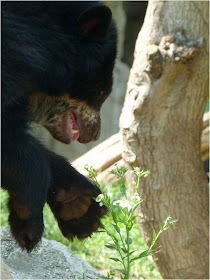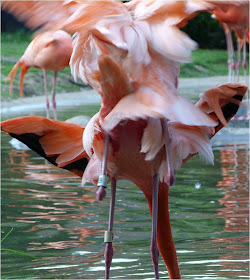
But mainly bears. It was painfully hot this past long weekend, so my intended brisk afternoon walk through the zoo became a painful stumbling crawl through the areas nearest to the entrance, which means I saw some alpacas busily browsing, the monkeys and spoonbills munching on snacks, and the spectacled bear cubs, who are pretty huge by now but are still pretty darn cute—at least to me.

And that got me thinking. The lion cubs were cute, too, and even now that they’re so big and adult-looking, they have a certain charm. But even when the lion cubs were very little, it was clear they were lions—big scary predators full of snarls and hunger and teeth.
The bears, on the other hand… They just seem so much cuddlier than the lions. It’s not that I don’t think they could crush my head or anything—and, in fact, one of the cubs was gnawing on a bone when I arrived at their enclosure—but still, it was gnawing in a cute way!

This isn’t my reaction to all bears, mind you—polar bears and grizzlies scare the hell out of me. So what is it about these guys that seems so—if not harmless—then unthreatening?
I think it has to be the absence of what, for lack of a better term, I’ll call predatory intensity. Maybe it’s because these bears are omnivores rather than carnivores that they’ve lost that hunter’s focus: the tight grip on the bone, the sharp, electric gaze that follows whatever can be perceived as prey.

These guys were missing that the whole time I watched them, whether they were gnawing on bones or trundling over to sniff the handfuls of fruit and veggies that a keeper tossed them from on high like favors thrown from a Mardi Gras float (but with less panache).

There’s a nonchalance about these bears that’s nothing like the piercing intensity of lions’ attention or the chilling, slightly psychotic glare of tigers.
Instead, they go after a piece of pear, or climb into a mulberry tree to satisfy their sweet tooth, or get distracted by whatever’s around them.
I’m not saying I’d jump in the exhibit and try to pet them, but, let's face it: no creature that stops and smells the daisies is going to win the Intimidating Animal Award. The Endearing Animal Award, on the other hand...
{A note: I do write all text and take all pictures. Please do not reproduce either without my permission.}




















































